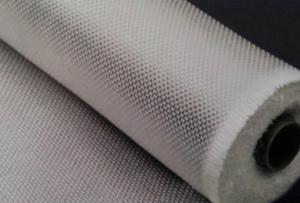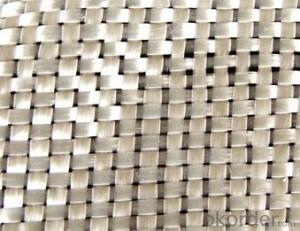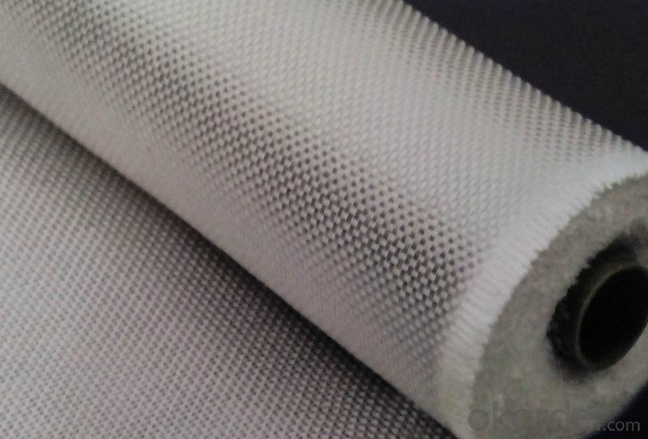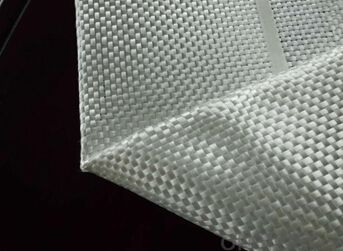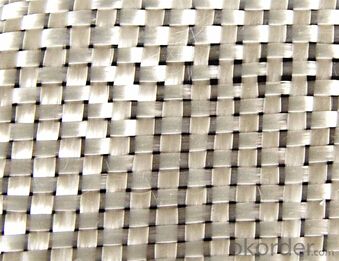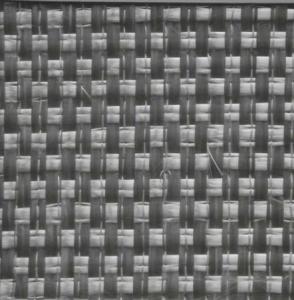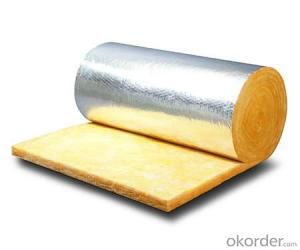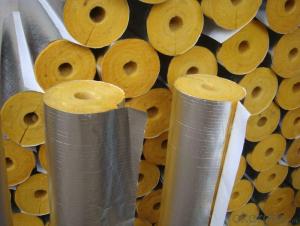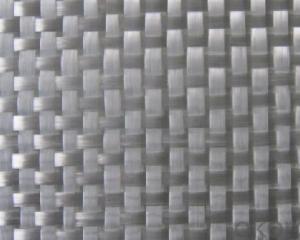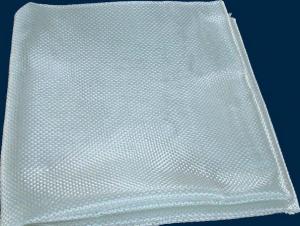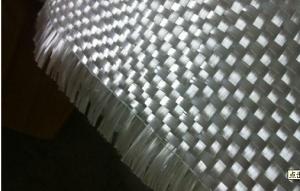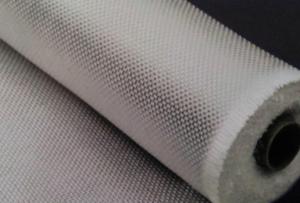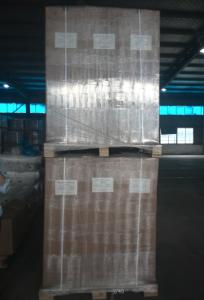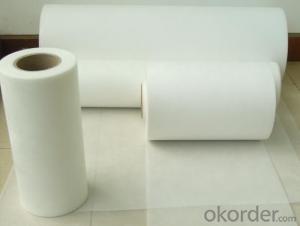Fiberglass Mat Tissue E-Glass Fiberglass Woven Roving, 400g, 1040mm
- Loading Port:
- China Main Port
- Payment Terms:
- TT or LC
- Min Order Qty:
- -
- Supply Capability:
- -
OKorder Service Pledge
OKorder Financial Service
You Might Also Like
Structure of woven roving Description
Glass woven rovings are bidirectional fabric by direct rovings in plain weave pattern. They are applicable for hand lay-up, winding and compress molding process, suitable for manufacturing tank, boat, automobile parts and other FRP products.
1,high strenth,corosion and resistence
2,consistent thickness,no fuzz
3,rapid impregnating
Main Features of the woven roving
1)Drapes well to suit the surface of intricate moulds
2)Fast wet-through and wet out
3)Easy handing and better appearance of the composite parts
4)Compatible with Unsaturated polyester resin
5)Very high laminate strength properties
Woven roving Images
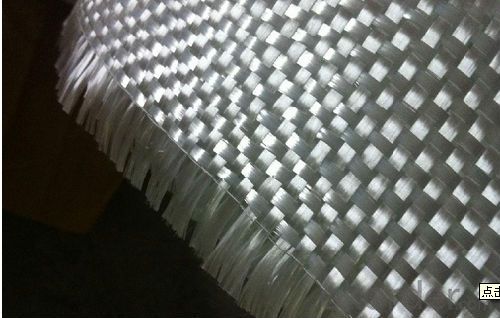
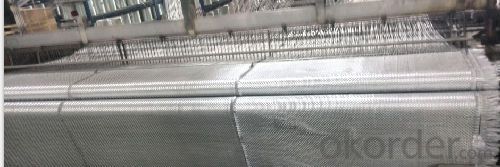
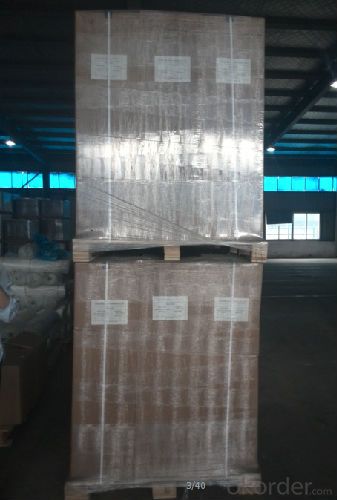
Woven roving Specification:
Normal type | EWR800 | EWR400 | EWR300 | EWR500 | EWR600 |
Thickness (mm) | 0.8 | 0.4 | 0.3 | 0.5 | 0.6 |
Density(warpxweft) (end/cm) | 1.8x1.5+/-10% | 3.6x3.2+/-10% | 4.6x4.1+/-10% | 2.2X2.0+/-10% | 2.6X2.4+/-10% |
Tex (warpxweft) | 2400x2400 | 600X600 | 300x400 | 1200x1200 | 1200X1200 |
Moisture content(%) | <0.2% | <0.2% | <0.2% | <0.2% | <0.2% |
Loss on ignition(%) | 0.4 – 0.8 | 0.4-0.8 | 0.4-0.8 | 0.4-08 | 0.4-0.8 |
Width(cm) | 125+/-1 | 125+/-1 | 125+/-1 | 125+/-1 | 125+/-1 |
Weight (g/m2) | 816+/-41 | 408+/-32 | 300+/-15 | 500+/-25 | 600+/-30 |
Weight per roll(kg) | 45 | 46 | 50 | 45 | 45 |
Glass | E-glass | E-glass | E-glass | E-glass | E-glass |
FAQ of woven roving:
Delivery Detail: 15-21days
Other spec. can be custom made as per customer's request.
Application of Fiberglass Woven Roving:
a) boats ,vessels ,plane
b) automotive parts ,furniture and sports facilities
c) resins system,such as polyeser,vinylester and epoxy resins
- Q: What is the tear resistance of fiberglass mat tissue?
- The ability of fiberglass mat tissue to withstand tearing or ripping when exposed to mechanical stress or force is referred to as its tear resistance. Due to its strong and durable nature, fiberglass mat tissue is renowned for its high tear resistance. This tear resistance is typically quantified and reported as tear strength, which measures the force needed to tear the material. The determination of tear strength involves standardized testing methods like the Elmendorf tear test or the tongue tear test. Various factors, including thickness, density, and composition, can influence the tear resistance of fiberglass mat tissue. Nevertheless, fiberglass mat tissue generally exhibits outstanding tear resistance properties, making it an excellent choice for applications where durability and strength are crucial, such as in the construction industry for reinforcement materials or in the production of composite materials.
- Q: Can fiberglass mat tissue be used for pipe insulation?
- Yes, fiberglass mat tissue can be used for pipe insulation. It provides thermal insulation and can help prevent heat loss or gain in pipes. Additionally, it offers excellent resistance to moisture and corrosion, making it suitable for various pipe insulation applications.
- Q: How does the cost of fiberglass mat tissue compare to other reinforcement materials?
- Compared to other reinforcement materials, fiberglass mat tissue is generally more affordable in terms of cost. It is widely utilized in a range of industries, including construction and automotive, due to its cost-effectiveness. In contrast, materials like carbon fiber or aramid fibers can be considerably pricier, which makes fiberglass mat tissue a favored option for many applications that necessitate reinforcement. Furthermore, fiberglass mat tissue provides exceptional strength and durability, thereby presenting a budget-friendly solution for projects that require reliable reinforcement.
- Q: Does fiberglass mat tissue require any maintenance?
- Once installed, fiberglass mat tissue typically does not need any maintenance. This material is designed to be tough and long-lasting, capable of enduring various environmental conditions. Unlike other materials, fiberglass mat tissue is resistant to rot, corrosion, and decay, making it a low-maintenance choice for many applications. Nevertheless, it is crucial to emphasize that proper installation is essential to ensure the longevity and effectiveness of fiberglass mat tissue. Following the manufacturer's guidelines, it should be installed in a way that securely bonds and seals it to the surface. This will help prevent any potential issues or damage that could result from improper installation. Occasionally, fiberglass mat tissue may require cleaning to remove accumulated dirt or debris. This can be achieved by using mild soap and water or by adhering to the manufacturer's recommended cleaning instructions. In summary, while regular maintenance is not required for fiberglass mat tissue, it is important to promptly address any issues or damages to prevent further deterioration. Regular inspections and necessary repairs should be conducted to ensure the material's continued performance and longevity.
- Q: Does fiberglass mat tissue require any special precautions during handling?
- Yes, fiberglass mat tissue does require special precautions during handling. It is important to wear protective gloves, long sleeves, and a mask to prevent skin and respiratory irritation. Additionally, it is recommended to handle fiberglass mat tissue in a well-ventilated area to minimize the inhalation of dust particles.
- Q: How does the strength of fiberglass mat tissue compare to other reinforcement materials?
- In comparison to other reinforcement materials, such as steel or carbon fiber, fiberglass mat tissue possesses a considerable level of strength. Comprised of an intricate arrangement of numerous glass fibers, this material proves to be robust and durable. Commonly employed in applications necessitating great strength, such as the construction industry for bolstering concrete structures, the automotive sector for manufacturing lightweight yet sturdy components, and the aerospace industry for constructing aircraft parts. Fiberglass mat tissue presents several advantages when contrasted with other reinforcement materials. Firstly, it exhibits a relatively low weight, rendering it more manageable and easier to transport. Furthermore, it boasts a high tensile strength, enabling it to endure stretching or pulling forces without succumbing to breakage. It also showcases impressive impact resistance and possesses the ability to absorb energy, making it suitable for contexts where impact resistance plays a crucial role. Moreover, fiberglass mat tissue demonstrates exceptional resistance to corrosion, making it suitable for deployment in harsh environments or in contact with chemicals. Unlike steel, it does not rust or deteriorate over time. Additionally, fiberglass mat tissue is non-conductive, a quality that proves useful in scenarios where electrical conductivity could pose a safety hazard or interfere with electronic equipment. In conclusion, fiberglass mat tissue's strength is regarded as exceptional when compared to other reinforcement materials. Its high tensile strength, lightweight composition, corrosion resistance, and impact resistance render it a versatile and widely utilized substance across various industries.
- Q: Can fiberglass mat tissue be used for wind turbine blades?
- Yes, fiberglass mat tissue can be used for wind turbine blades. It is commonly used as a reinforcement material in wind turbine blade manufacturing due to its high strength, lightweight nature, and excellent corrosion resistance.
- Q: What is the weight of fiberglass mat tissue per square meter?
- The weight of fiberglass mat tissue per square meter can vary depending on the specific product and manufacturer. However, on average, fiberglass mat tissue typically weighs around 100-300 grams per square meter.
- Q: Can fiberglass mat tissue be used for insulation in cleanrooms?
- Yes, fiberglass mat tissue can be used for insulation in cleanrooms. It is a commonly used material due to its excellent thermal insulation properties, low cost, and high resistance to chemicals and moisture. Additionally, fiberglass mat tissue has low particulate emission, making it suitable for cleanroom environments where maintaining a controlled and sterile atmosphere is crucial.
- Q: What is the thermal stability of fiberglass mat tissue?
- The thermal stability of fiberglass mat tissue is quite high. It can withstand high temperatures without significant degradation or loss of its structural integrity.
Send your message to us
Fiberglass Mat Tissue E-Glass Fiberglass Woven Roving, 400g, 1040mm
- Loading Port:
- China Main Port
- Payment Terms:
- TT or LC
- Min Order Qty:
- -
- Supply Capability:
- -
OKorder Service Pledge
OKorder Financial Service
Similar products
Hot products
Hot Searches
Related keywords
